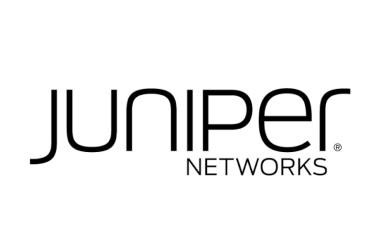Spokesperson: Gaurav Mohan, VP Sales, SAARC & Middle East, NETSCOUT
 Enterprise network and security teams face an egregious increase in cyberattacks against their networks. According to NETSCOUT’s latest threat intelligence report, bad actors launched 9.7 million Distributed Denial of Service (DDoS) attacks in 2021.
Enterprise network and security teams face an egregious increase in cyberattacks against their networks. According to NETSCOUT’s latest threat intelligence report, bad actors launched 9.7 million Distributed Denial of Service (DDoS) attacks in 2021.
As traditional network models are rapidly being replaced with flexible edge architectures better suited to meeting the needs of hybrid workplaces, having improved network visibility is key to maintaining and securing these complex systems. With increased reliance on more distributed networks, and with services constantly joining and leaving the network, IT professionals are under constant pressure to ensure the infrastructure is both operational and secure.
The pace of digital transformation is speeding up, giving enterprises an opportunity to incorporate new layers of security. However, as network architectures evolve, threat surfaces expand, and security professionals are dependent on tools to deliver visibility down to the packet level. The real issue becomes whether these tools and the data they produce can be trusted.
The Hybrid Work Model Focuses on Providing a Positive End-User Experience
As more employees are requested to work in a hybrid paradigm, it’s critical to make sure they have the tools they need to complete their tasks well. As a result, collaborative tools and business software must provide an exceptional user experience. An Avaya surveynoted that 25% of employees have complained about lacking the appropriate technology for their home work environment, thus needing an update.
In this hybrid environment, unified communications, and collaboration (UC&C) technologies are becoming increasingly popular. According to another survey, 76% of employees use video conferencing for distant work. IT presents a significant difficulty in identifying and resolving problems as business infrastructures become more complex, relying on various vendors to supply key services to both home and office workspaces.
IT businesses are under pressure to ensure the end-user experience with a growing range of applications, including software as a service (SaaS), unified communications as a service (UCaaS), and data center-based services operating at the edge. To do so, they’ll require complete visibility and integrated analysis throughout the whole transaction ecosystem.
The Value of Edge Packet Data Monitoring and Synthetic Testing Data
The combination of packet data collected at the edge and synthetic testing results in smart edge monitoring. This gives IT teams total visibility and insight into employee digital experiences across any network or application, regardless of where users execute their duties.
When remote users experience performance issues, sophisticated data transaction checks notify IT, alerting them to a potential problem that may be promptly remedied using the solution’s robust service triage protocols. Employee irritation and lost productivity are reduced, and larger-scale outages may be avoided, if such problems are detected early and resolved quickly.
So many edges, so little visibility
With so many edges in today’s IT infrastructures, it’s tough to tell whether problems are occurring at the client edge, network edge, or data centre/cloud service edge due to visibility gaps.
Delays in logins, slow performance, and even outages in essential business applications can all be caused by traffic difficulties at these edges, which can negatively impact on staff productivity and customer service.
Due to the lack of visibility across so many edges, IT requires vendor-agnostic solutions that can quickly pinpoint the source of problems. The solution to this conundrum is smart edge monitoring.
The Value of Edge Packet Data Monitoring and Synthetic Testing Data
The combination of packet data collected at the edge and synthetic testing results in smart edge monitoring. This gives IT teams total visibility and insight into employee digital experiences across any network or application, regardless of where users execute their duties.
When remote users experience performance issues, sophisticated data-transaction checks notify IT, alerting them to a potential problem that may be promptly remedied using the solution’s robust service triage protocols. Employee irritation and lost productivity are reduced, and larger-scale outages may be avoided, if such problems are detected early and resolved quickly.
Security Should Be Factored in from the Start
All too often, new technologies are implemented with an eye toward rapid implementation to meet urgent business needs, leaving security considerations as an afterthought. This approach can end up limiting visibility, thus introducing security blind spots. And, it probably goes without saying, these blind spots have become an attractive target to cyberattacks.
It is for this reason that security must be factored in from the start. Ultimately, comprehensive network visibility is at the heart of both security and network assurance. As such, in today’s constantly evolving network environments, service assurance and security teams need trustworthy insights into voice, video, software-as-a-service (SaaS) application performance, and emerging communication protocols such as 5G.
It is clearly apparent that managing security must be an integral part of having an operational network. In the final analysis, network assurance and security share the same goal — having a secure and operational infrastructure. This means enterprises need to consider how to provide effective networks, while also maintaining security. Emerging technologies offer the promise of helping to mitigate security threats, but these must be scrutinized to ensure they don’t negatively impact employee productivity.
Putting security concerns front and center at the beginning of the network expansion process is key to achieving better network visibility and a more secure infrastructure.





